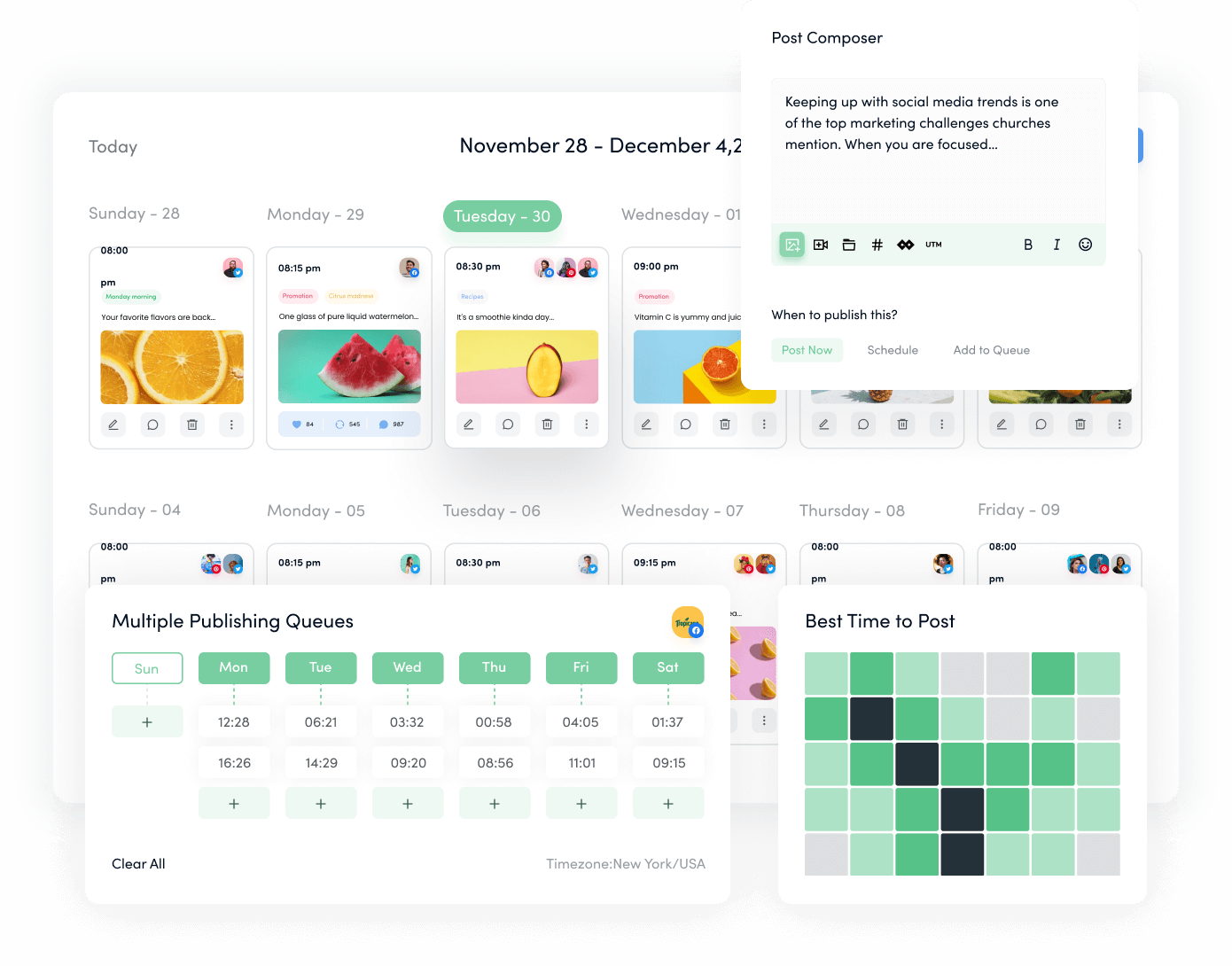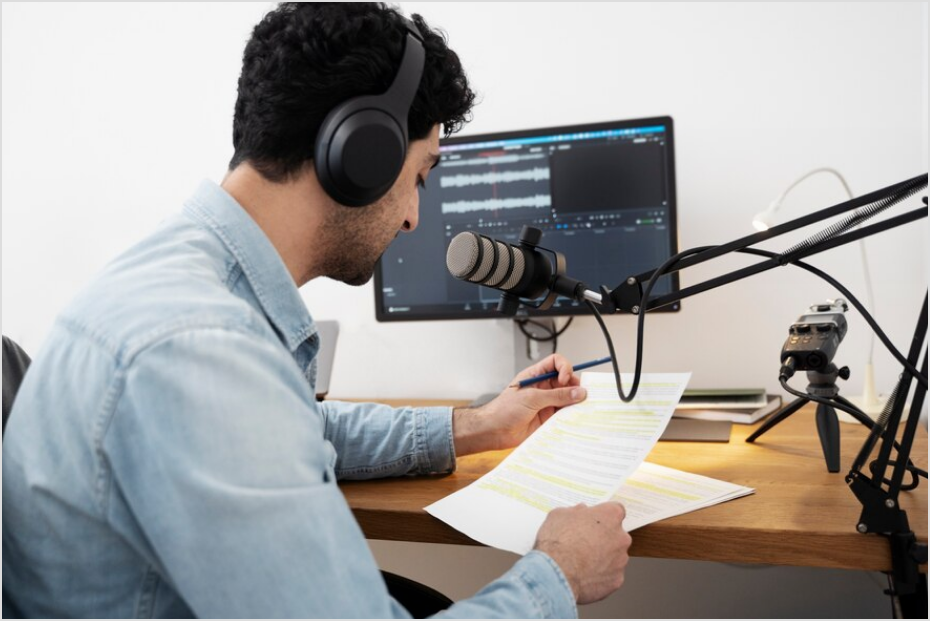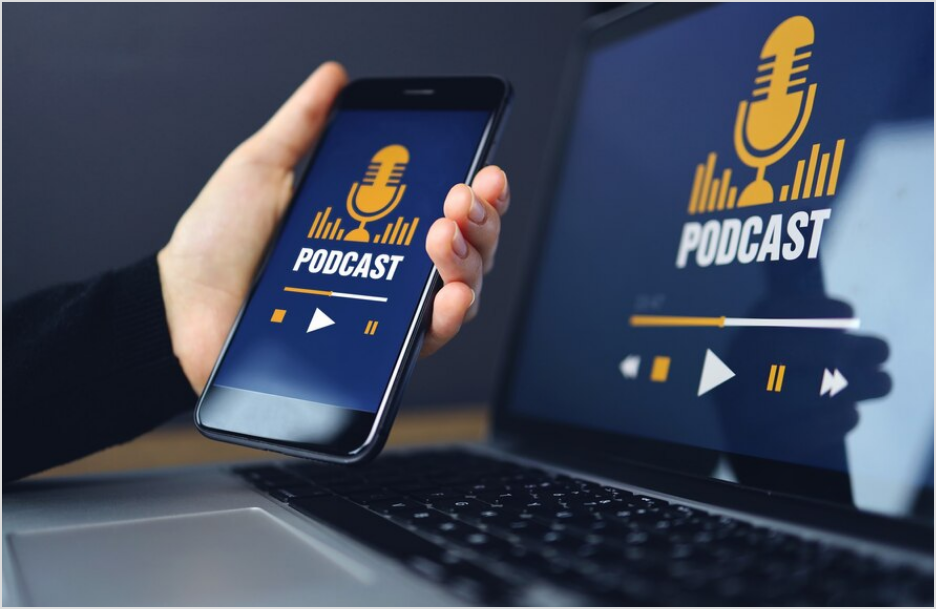Picture this: Your voice is heard by people worldwide, discussing topics you’re passionate about and even having the chance to interview fascinating guests. It’s like having your own radio show, and it’s a lot of fun. Well, lucky you; in this guide, we will break down the steps to start a podcast. Without further delay, let’s keep going.
Simplified social media marketing for individuals & agencies.

Steps to start a podcast
Starting a podcast can be an exciting and creative endeavor, but it also requires careful planning and execution. Here are the steps to help you get started:
1. Define your podcast concept:
- Select a niche or topic you’re passionate about and knowledgeable in.
- Consider your target audience and the value you can provide to them.
- Craft a unique angle or perspective that sets your podcast apart from others in the same field.

2. Plan your content:
- Develop an episode outline or content plan.
- Decide on the podcast format (interviews, solo, panel discussions, storytelling, etc.).
- Determine the ideal episode length, usually ranging from 20 minutes to an hour.
Social Media Content Calendar Stay consistent and organized with Contentstudio’s social media content calendar for marketers and agencies.

3. Gather the necessary equipment:
- Invest in a high-quality microphone and headphones.
- Consider additional tools like a pop filter, microphone stand, and audio interface.
- Utilize recording and editing software such as Audacity, Adobe Audition, or GarageBand.

4. Create artwork and branding:
- Design attention-grabbing cover art for your podcast.
- Establish a consistent visual and verbal brand identity.
- Craft a compelling podcast title and description.

5. Recording and editing:
- Find a quiet place to record.
- Prepare a script or outline for structured episodes.
- Record your episodes with a focus on audio quality.
- Edit your recordings to eliminate mistakes in background noise and enhance sound quality.

6. Hosting and RSS feed:
- Choose a podcast hosting platform to store and distribute your episodes; options like Libsyn, Podbean, and Anchor are popular.
- Create an RSS feed for your podcast within your chosen hosting platform.

7. Publish and submit to directories:
- Upload your edited episodes to your hosting platform.
- Submit your podcast to directories such as Apple Podcasts, Spotify, Google Podcasts, and Stitcher.
- Use your social media accounts to let more people know about it.

8. Monetization and promotion:
- Explore various monetization avenues, including sponsorships, advertisements, and crowdfunding.
- Continue promoting your podcast through audience engagement on social media, collaborations with fellow podcasters, and participation in industry events.
Related Read: How to Use Social Media Platforms to Monetize Your Video Content?

9. Consistency and quality:
- Stick to a regular release schedule to keep your audience engaged.
- Continuously improve to enhance the quality of your content and audio.

10. Engage with your audience:
- Respond to listener feedback and interact with your audience through social media and email.
- Encourage engagement and reviews by including a call to action at the end of your episodes.

Time and dedication are essential to build a successful podcast. Consistency, high-quality content, and effective promotion are keys to growing your audience and achieving your podcasting goals.
That’s all for this guide, and ContentStudio wishes you all the best in your podcast endeavor!
FAQs
How much does it cost to start a podcast?
The cost varies, but you can start with essential equipment for around $100 to $300, while more professional setups may range from $500 to several thousand dollars.
Do podcasts make money?
Yes, podcasts can generate income through sponsorships, ads, listener donations, merchandise sales, and premium content subscriptions.
